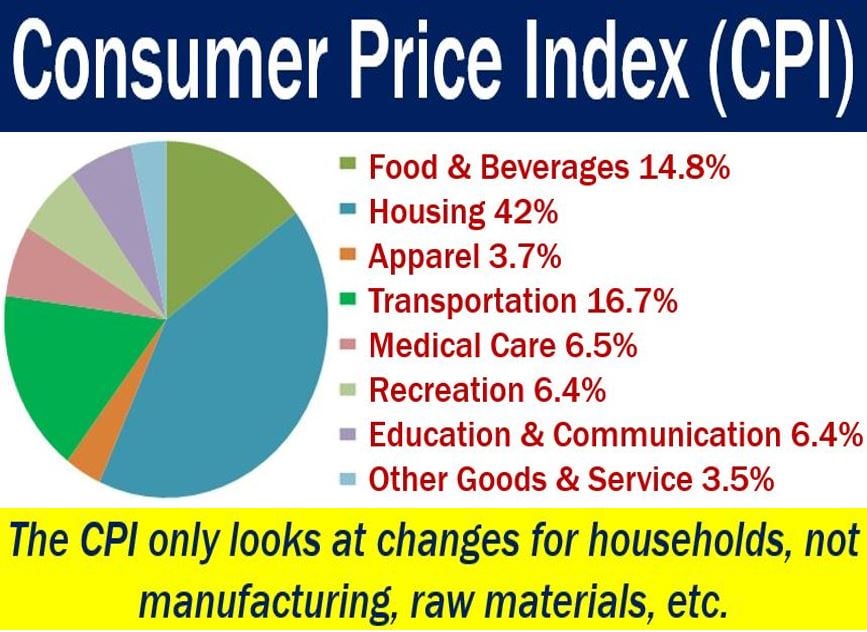The Consumer Price Index or CPI is an index which measures the changes in the price level of consumer goods and services that consumers buy. We often refer to consumers as ‘households.’
The consumers should be a representative sample that the CPI organizers take randomly. In other words, they should represent the country average.
The Consumer Price Index aims to show us how much prices have changed. It looks at the change in the price of services as well as goods.
We can use it as an economic indicator, a means of adjusting currency values, and a deflator of other economic series. A deflator is a measure of inflation.

According to Cambridge Dictionaries Online, the Consumer Price Index is:
“A list of the prices of basic goods and services, showing how they change in a particular period of time, as a way of measuring inflation.”
Calculating Consumer Price Index
For a single item:
Current item price ($) = (base year price) x (Current CPI) / (Base year CPI)
For multiple items:
![]()
Inflation vs. Computer Price Index
Inflation refers to how much prices have risen over a specific period. We usually calculate the monthly, quarterly, half-yearly, or annual inflation rate.
The Consumer Price Index refers to just an index, i.e., an instant in time. In other words, the CPI looks at prices in a moment in time or a slice of time.
The inflation rate for one year, for example, is the Current CPI minus the Previous CPI, divided by the Previous CPI, and then multiplied by 100.
Here is an example:
– Let’s suppose the CPI today is 165.
– Let’s also suppose that the CPI exactly one year ago was 150. We call it the ‘previous CPI.’
The formula is:
(165 – 150) ÷ 150 x 100 = 10%
Therefore, inflation is 10%
Bear in mind that by using this formula, you would only know what the inflation rate is for households. The CPI does not take into account ALL prices in an economy.
For example, it does not tell us what happened to factory prices or the prices of raw materials.
The Retail Prices Index
The United Kingdom used to measure consumer inflation with the RPI. RPI stands for Retail Prices Index. However, the RPI did not meet international standards.
In 2013, the UK’s Office for National Statistics announced that it would no longer classify RPI as a ‘national statistic,’ It opted for the Consumer Price Index instead.
